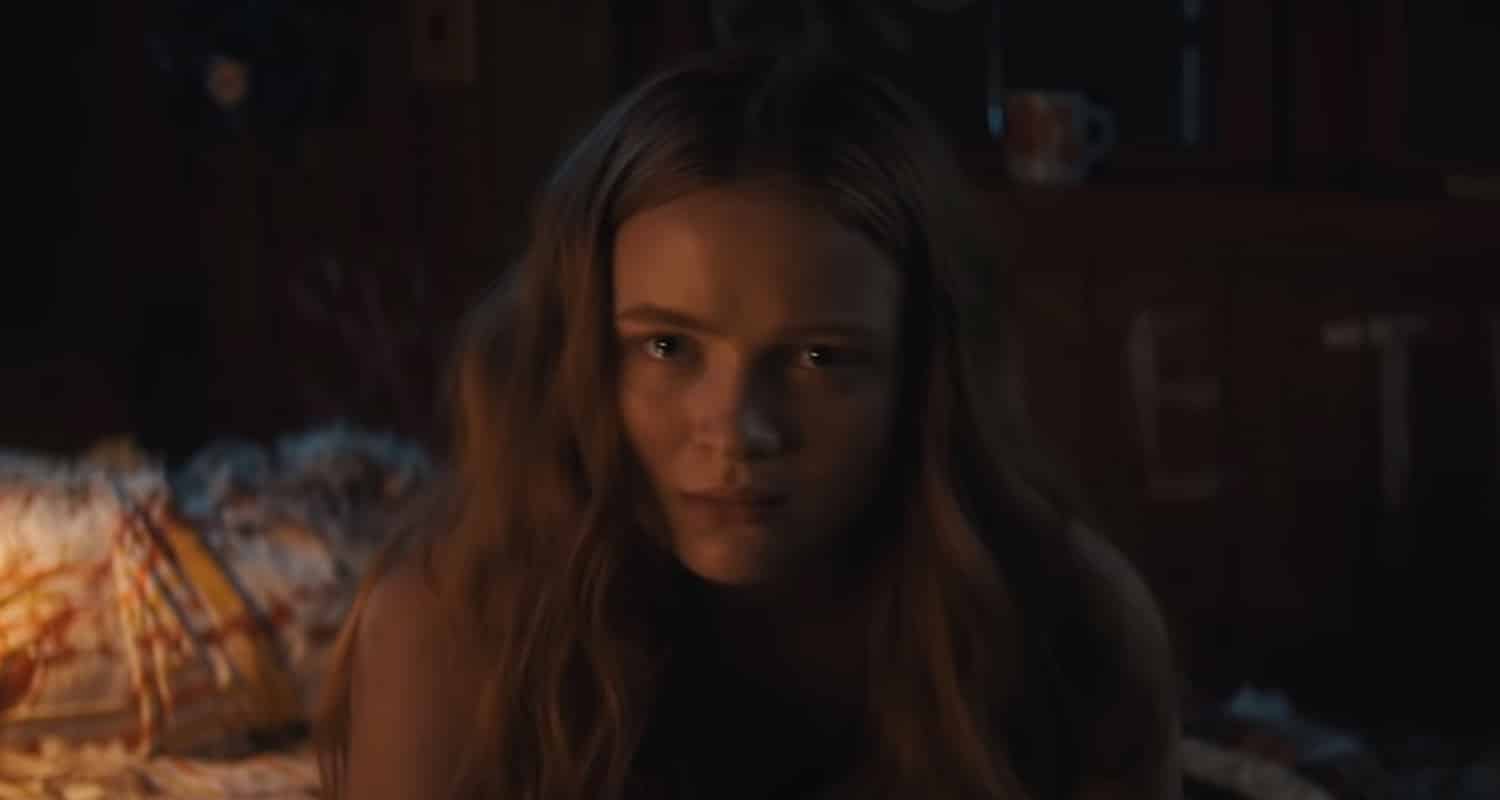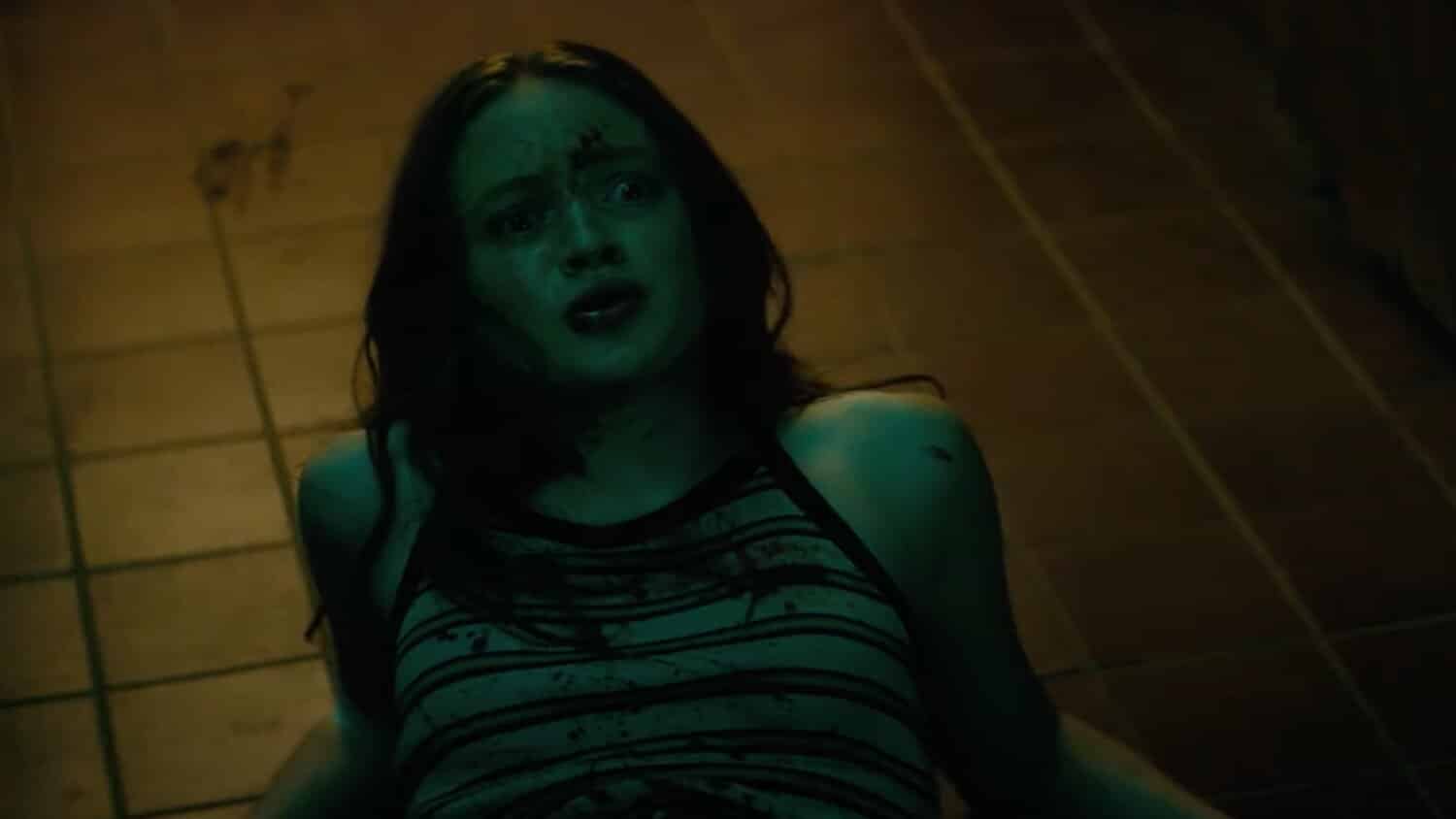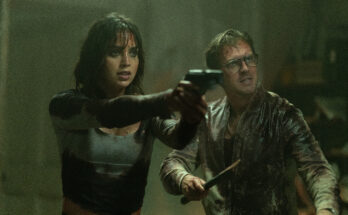Want to hear more from the actors and creators of your favorite shows and films? Subscribe to The Cinema Spot on YouTube for all of our upcoming interviews!
Managing editor & film and television critic with a Bachelor's of Arts in English Literature with a Writing Minor from the University of Guam. Currently in graduate school completing a Master's in English Literature.
Leigh Janiak, the cast, and the crew of the Fear Street trilogy are at it again. Jordan Simmons and I were fortunate enough to watch the first two installments of Netflix’s summer horror event. Read his non-spoiler review on Part One: 1994 if you need to refresh yourself on the overarching narrative.
In this review, I will be discussing its sequel, Part Two: 1978, which premieres this Friday on the streaming platform. Minimal spoilers will be present, as the title of this article insinuates. Nonetheless, please read on at your own risk.

The Omen
Part Two follows where Part One left off. Here is the short plot synopsis, according to the Netflix website:
In the cursed town of Shadyside, a killer’s murder spree terrorizes Camp Nightwing and turns a summer of fun into a gruesome fight for survival.
The Tommyknockers
Carmen Cuba once again picked out an excellent cast of actors for this film. Gillian Jacobs portrays C. Berman, while Kiana Madeira and Benjamin Flores Jr. reprise their respective roles as Deena and Josh Johnson.
Matthew Zuk appears as Mayor Will Goode, while Ashley Zukerman portrays his brother, Sheriff Nick Goode. Julia Rehwald and Fred Hechinger make small appearances as Kate Schmidt and Simon Kalivoda. Elizabeth Scopel plays Sarah Fier.
Most of the other actors play characters in July 1978. Sadie Sink plays camper Ziggy Berman, while Emily Rudd portrays her sister, Cindy Berman. Ted Sutherland plays young Nick Goode, while McCabe Slye plays Thomas “Tommy” Slater, a camp counselor and Cindy’s boyfriend. Ryan Simpkins and Sam Brooks play druggie counselors, Alice and Arnie.
Michael Provost, Jacqi Vené, and Drew Scheid play other camp counselors, Kurt, Joan, and Gary.
In smaller roles, Brandon Spink briefly appears as a younger Will Goode. Chiara Aurelia, Marcelle LeBlanc, and Eden Campbell play Ziggy’s camp bullies, Sheila, Becky, and Annie, respectively. Jordana Spiro plays Nurse Mary Lane, while Jordyn DiNatale plays Ruby Lane. Jason Edwards plays a policeman, while Paul Teal plays Officer Kapinski. Dylan Gage plays a young camper named Jeremy.
The Shadyside killers also appear in the film. Michael Chandler plays Cyrus “The Pastor” Miller, while Emily Brobst plays Billy Barker. Jordyn DiNatale plays Ruby Lane. Keil Oakley Zepernick portrays Isaac “Shame Killer’ Milton, while Kevin Waterman plays Harry “The Milkman” Rooker.
Discussion of the Body Snatchers
Most of the primary crew members of Fear Street Part One return to make their mark in this sequel. Joining Phil Graziadei and director Leigh Janiak for the story (and replacing Kyle Killen) is Zak Olkewicz. He also helps Janiak with the film’s screenwriting aspect. Joining Marco Beltrami (and replacing Marcus Trumpp) on musical composition is Brandon Roberts. Other than that, the main cinematic elements of the film have remained in the same safe hands. The music choices are on point, and I love every song that was included in the soundtrack. Much love to Nora Felder and Lindsay Wolfington for the film’s music supervision.
I also highly adore Paul Graff’s visual effects supervision, along with Amanda Ford’s costume design and Scott Kuzio’s production design. They don’t get so much in the way of Rachel Goodlett Katz’s editing and Caleb Heymann’s cinematography. We also need to give credit to Alan D’Antoni’s stunt coordination as well as Patrick Campbell and Chris Hunter’s storyboard art. The film really couldn’t be the same without any of these people’s work!
What I love about the film is its ability to transform trauma and pain into inner strength, a different type of power for the human being. It examines unfortunate circumstances and says there’s “not always a rational” reason for these, as Sink’s character says. There are few references to Stephen King’s novels, Carrie and ‘Salem’s Lot. Although, I’m not sure if the mention of his “new” book is alluding to The Shining (which follows after the two) or The Stand (which literally released the fall after Summer 1978).
Don’t Look Now
In terms of the film’s pacing, the first kill doesn’t happen until over one-third of the way in, which seems fine. It does take a little bit for the real horror to settle, and it’s quite gory, maybe just more than in the first film. For a story that’s meant to take place in the year 1978, Part Two pays more homage to iconic popular culture films of the 1980s, such as Friday the 13th (1980), The Evil Dead (1981), The Goonies (1985), and even a hint of Back to the Future Part II (1989) towards the end. It also gives one of its male lead characters a Billy Loomis look, which made the plot all the more predictable.
Do not expect much from the 1994 characters. The film serves as a filler story, albeit still relevant to the overall narrative by providing some context to one of Shadyside’s past killers. Here, we see two protagonist characters develop in what looks to be an origin story, as well as one for a particular killer. The kills were outrageous and absurd, targeting mostly young people who seemed to occupy a room. They reminded me of Adult Swim’s Mr. Pickles Season 1 Episode 4 (“The Cheeseman”) and how the camp’s killer character was conceived arbitrarily.
Child’s Play
To add, a lot of film’s supporting character deaths hold no weight to them. Therefore I have to ask to what extent should I care for the loss of these characters? Another concern I have is its demographics. Unlike Stine’s other adaptations (e.g. Goosebumps, The Nightmare Room, and The Haunting Hour), the Fear Street trilogy contains drugs, profanity, and sexual pursuits. If the famed writing is beginning to appeal to more mature audiences, it’s going to take a while to get used to. With that said, I don’t mind it. These are all minor flaws and don’t take away from what posits the overall film between above average and near-perfect.
Pristine Like Christine
I love the writers’ focus on the female characters, especially Rudd’s dynamic with Sink and with Simpkins. They don’t talk so much about the men in their lives and instead discuss other horrors that make up their respective milieu. As a result, I can only say that they easily pass the Bechdel Test. It really seems like the writers care more for the female characters than they do for the males, with the exception of Sutherland’s young Nick Goode, who plays well in the leader role. Rudd, Sink, Simpkins, and Sutherland are the best performers out of the twenty-two characters of the 1978 storyline.
In contrast, the chemistries amongst the couples of the film are almost difficult to detect. I believe Sink and Sutherland have the most sparks than every other couple in the narrative. Just when you think something spicy is about to happen, it doesn’t, and you’re left wondering what could be. We do see something between a Shadyside counselor and a Sunnyvale counselor, but that’s something from teenage hormones than anything else.

The Descent
Maybe we aren’t supposed to question the logic and reasoning of an R.L. Stine adaptation. Olkewicz, Graziadei, and Janiak let one scene play out as if a preceding one didn’t just happen, and that’s the funny part. How exactly did we reach the conclusion of the film when new elements were being introduced into the fray? Although, we aren’t to pin the blame on their characters. They don’t know the rules of a supernatural slasher film. I will admit one thing. This installment possesses more plot and character development than other movies in the genre, making it just lightyears better than most movies in the Friday the 13th franchise.
No matter how you perceive it, this sequel concludes on a tragic note like its predecessor. Sure, it does have its issues here and there, but they’re nothing to be too furious about. I actually did feel for the major character(s) that were written off. It’s like what Vené’s hippie stoner counselor character says in the first act, “Despite our differences, we’re all perfect!” Overall, Fear Street Part Two: 1978 can be predictable, slow-paced, and yet, it’s nice to see some plot points come full circle with the previous film.
The first installment of the Fear Street trilogy is now available to watch on Netflix!
What are your thoughts on this R.L. Stine adaptation? Let us know! For more horror and slasher-related news and reviews, follow The Cinema Spot on Facebook, Twitter, and Instagram!
Also, stay tuned for Claudia Caceres’s review on the final installment of the trilogy — Fear Street Part Three: 1666 –, releasing at the end of next week!
Managing editor & film and television critic with a Bachelor's of Arts in English Literature with a Writing Minor from the University of Guam. Currently in graduate school completing a Master's in English Literature.





3 Comments on “‘Fear Street Part Two: 1978’ Non-Spoiler Review”